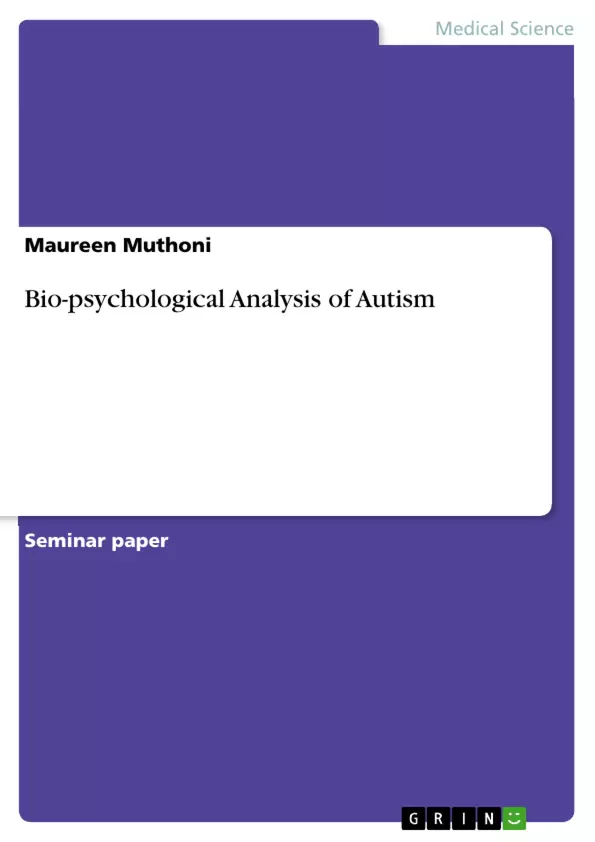Autism is a neuropsychological disorder that is characterized by impaired communication, social interaction, as well as restricted and repetitive behavior. Most parents usually note signs of autism in the first two years of their children’s life (Le Breton, 2010). These signs usually develop gradually, but some children suffering from autism usually reach the usual developmental milestones at a relatively normal pace then start regressing. Autism is characterized by particular set of behaviors and is also a spectrum disorder. This means that autism affects individuals differently and with varying degrees and intensity. As such, while all people with this disorder share some difficulties, their condition affects them in different ways. Some behaviors associated with autism include difficulty in holding a conversation or making eye contact, delayed learning of language, difficulty with executive functioning that relates to planning and reasoning, narrow and intense interests, poor sensory sensitivities, as well as poor motor skills (Dawson, 2011). Again, an individual on the spectrum of this disorder might follow most of these behaviors or just a few of them, or many others besides. This paper critically analyses autism including its causes, pathology, treatment options, as well as the diagnostic and technologies that are employed in clinical diagnosis, care, and basic science research of this order.
Inhaltsverzeichnis (Table of Contents)
- Bio-psychological Analysis of Autism
- History of Autism
- Signs and Symptoms of Autism
- Social Development
- Communication
- Repetitive Behavior
- Epidemiology
- Theories of Etiology
- Diagnosis
- Treatment Options
Zielsetzung und Themenschwerpunkte (Objectives and Key Themes)
This paper presents a comprehensive analysis of autism, exploring its historical context, symptoms, causes, diagnosis, and treatment options. The paper aims to provide a deeper understanding of this neuropsychological disorder, particularly for parents and individuals seeking to understand and support autistic individuals.
- The historical development of understanding and diagnosing autism.
- The core symptoms of autism, including social communication difficulties and repetitive behaviors.
- The role of genetics and environmental factors in the etiology of autism.
- The diagnostic process and current treatment approaches for autism.
- The impact of autism on individuals and families, and the importance of early intervention and support.
Zusammenfassung der Kapitel (Chapter Summaries)
The paper begins by providing a historical overview of autism, tracing its recognition and understanding from early anecdotal accounts to the formal definition and diagnosis. The paper then explores the defining characteristics of autism, including social communication difficulties and repetitive behaviors, and examines the developmental trajectory of these symptoms. The paper further delves into the epidemiology of autism, highlighting its prevalence and risk factors. Finally, the paper discusses the current understanding of the causes of autism, including both genetic and environmental factors, and outlines the diagnostic process and available treatment options.
Schlüsselwörter (Keywords)
Autism Spectrum Disorder, neuropsychological disorder, social communication, repetitive behaviors, epidemiology, etiology, diagnosis, treatment, genetics, environment, early intervention, support.
- Quote paper
- Maureen Muthoni (Author), 2015, Bio-psychological Analysis of Autism, Munich, GRIN Verlag, https://www.grin.com/document/295291



